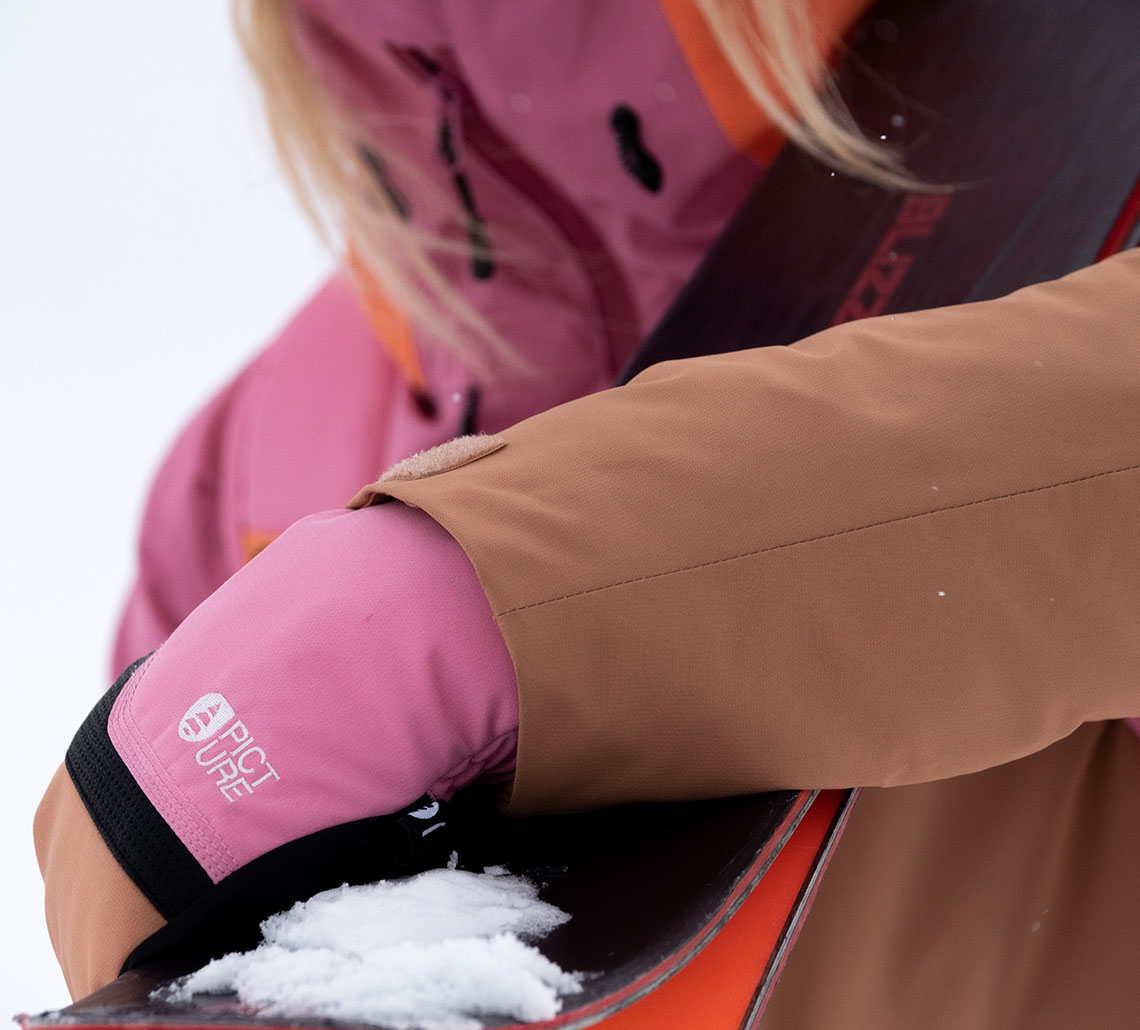Gloves | Alpine Skiing
.
- - 20 %
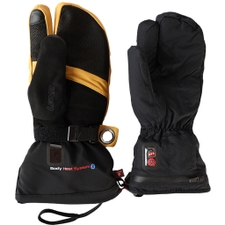 LenzHeat Glove 8.0 Cap Lobster 3-Finger Gloves Schwarz / GelbMSRP 199,95 €159,95 €Available Sizes:SLXL
LenzHeat Glove 8.0 Cap Lobster 3-Finger Gloves Schwarz / GelbMSRP 199,95 €159,95 €Available Sizes:SLXL - - 20 %
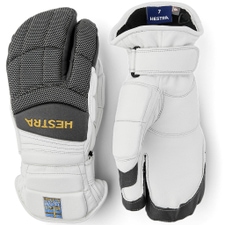 HestraGSL Race Comp 3-Finger Gloves White / YellowMSRP 219,95 €175,95 €Available Sizes:9,0
HestraGSL Race Comp 3-Finger Gloves White / YellowMSRP 219,95 €175,95 €Available Sizes:9,0 - - 20 %
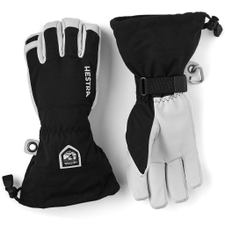 HestraArmy Leather Heli Ski Gloves BlackMSRP 149,95 €119,95 €Available Sizes:6,08,010,011,012,0
HestraArmy Leather Heli Ski Gloves BlackMSRP 149,95 €119,95 €Available Sizes:6,08,010,011,012,0 - - 20 %
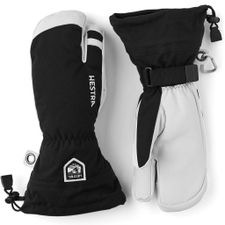 HestraArmy Leather 3- Gloves BlackMSRP 149,95 €119,95 €Available Sizes:11,0
HestraArmy Leather 3- Gloves BlackMSRP 149,95 €119,95 €Available Sizes:11,0 - new
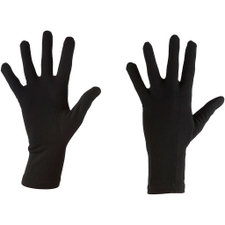 Icebreaker200 Oasis Liners Gloves Black35,95 €Available Sizes:XSSMLXL
Icebreaker200 Oasis Liners Gloves Black35,95 €Available Sizes:XSSMLXL
- - 32 %
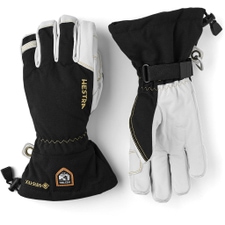 HestraArmy Leather GTX Gloves BlackMSRP 189,95 €129,00 €Available Sizes:8,0
HestraArmy Leather GTX Gloves BlackMSRP 189,95 €129,00 €Available Sizes:8,0 - - 20 %
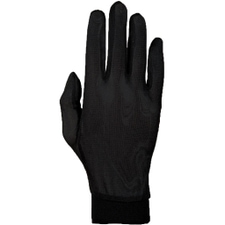 RoecklSilk Liner- Gloves SchwarzMSRP 19,95 €15,95 €Available Sizes:SMLXL
RoecklSilk Liner- Gloves SchwarzMSRP 19,95 €15,95 €Available Sizes:SMLXL - - 23 %
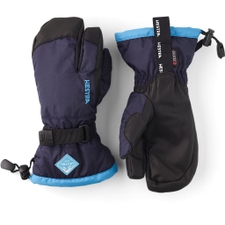 HestraGaunlet C-Zone 3-Finger Gloves Dark Navy / Turquise KidsMSRP 64,95 €49,95 €Available Sizes:456
HestraGaunlet C-Zone 3-Finger Gloves Dark Navy / Turquise KidsMSRP 64,95 €49,95 €Available Sizes:456  ZienerLago GTX Junior Gloves Black Kids32,95 €Available Sizes:5,0
ZienerLago GTX Junior Gloves Black Kids32,95 €Available Sizes:5,0- - 20 %
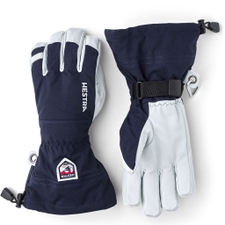 HestraArmy Leather Heli Ski Gloves NavyMSRP 149,95 €119,95 €Available Sizes:811
HestraArmy Leather Heli Ski Gloves NavyMSRP 149,95 €119,95 €Available Sizes:811 - - 20 %
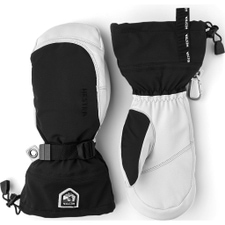 HestraArmy Leather Extreme Mittens Black / OffwhiteMSRP 179,95 €143,95 €Available Sizes:7,09,011,0
HestraArmy Leather Extreme Mittens Black / OffwhiteMSRP 179,95 €143,95 €Available Sizes:7,09,011,0
- - 20 %
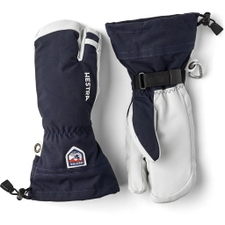 HestraArmy Leather 3-Finger Gloves NavyMSRP 149,95 €119,95 €Available Sizes:11
HestraArmy Leather 3-Finger Gloves NavyMSRP 149,95 €119,95 €Available Sizes:11  HestraArmy Leather Extreme Mittens Black / Black179,95 €Available Sizes:6,07,08,09,010,0
HestraArmy Leather Extreme Mittens Black / Black179,95 €Available Sizes:6,07,08,09,010,0
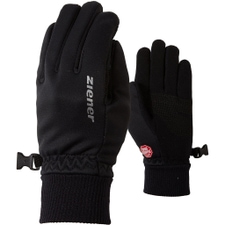 ZienerLidealist WS Touch Junior Gloves Black Kids29,95 €Available Sizes:3,54,04,55,05,5
ZienerLidealist WS Touch Junior Gloves Black Kids29,95 €Available Sizes:3,54,04,55,05,5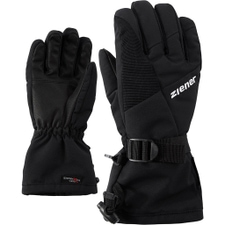 ZienerLani GTX Junior Gloves Black Kids59,95 €Available Sizes:3,54,04,55,05,5
ZienerLani GTX Junior Gloves Black Kids59,95 €Available Sizes:3,54,04,55,05,5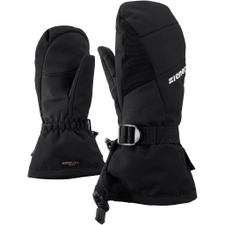 ZienerLanic GTX + Gore Plus Warm Junior Mittens Black Kids59,95 €Available Sizes:3,03,54,04,55,0
ZienerLanic GTX + Gore Plus Warm Junior Mittens Black Kids59,95 €Available Sizes:3,03,54,04,55,0- - 20 %
 HestraHeli Ski Mittens Black / Offwhite WomenMSRP 144,95 €115,95 €Available Sizes:6,07,0
HestraHeli Ski Mittens Black / Offwhite WomenMSRP 144,95 €115,95 €Available Sizes:6,07,0 - - 21 %
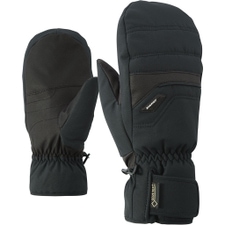 ZienerGlyndal GTX + Gore Plus Warm Mittens Black MenMSRP 75,95 €59,95 €Available Sizes:7,58,08,59,09,5
ZienerGlyndal GTX + Gore Plus Warm Mittens Black MenMSRP 75,95 €59,95 €Available Sizes:7,58,08,59,09,5 - - 20 %
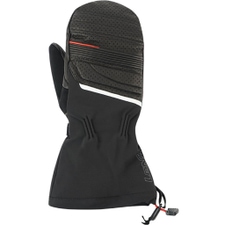 LenzHeat Glove 6.0 Finger Cap Unisex - without battery - Mittens SchwarzMSRP 159,95 €127,95 €Available Sizes:XSMLXL
LenzHeat Glove 6.0 Finger Cap Unisex - without battery - Mittens SchwarzMSRP 159,95 €127,95 €Available Sizes:XSMLXL  HestraGTX Mittens Black Kids69,95 €Available Sizes:3456
HestraGTX Mittens Black Kids69,95 €Available Sizes:3456- - 20 %
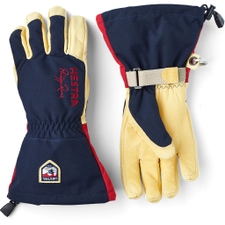 HestraPhilippe Raoux Classic Gloves NavyMSRP 179,95 €143,95 €Available Sizes:8,010,011,0
HestraPhilippe Raoux Classic Gloves NavyMSRP 179,95 €143,95 €Available Sizes:8,010,011,0 - - 26 %
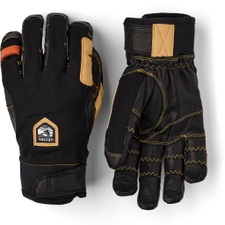 HestraErgo Grip CZone Tactility Short Gloves BlackMSRP 174,95 €129,00 €Available Sizes:10,0
HestraErgo Grip CZone Tactility Short Gloves BlackMSRP 174,95 €129,00 €Available Sizes:10,0 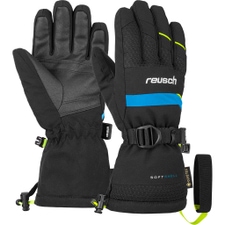 ReuschMaxim GTX Junior Gloves Black / Safety Yellow Kids54,95 €Available Sizes:4,04,5
ReuschMaxim GTX Junior Gloves Black / Safety Yellow Kids54,95 €Available Sizes:4,04,5 HestraArmy Leather Heli Ski 3- Gloves Black Kids99,95 €Available Sizes:5
HestraArmy Leather Heli Ski 3- Gloves Black Kids99,95 €Available Sizes:5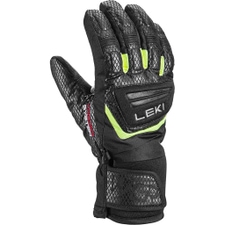 LekiWCR Team 3D Gloves Black / Ice Lemon Kids64,95 €Available Sizes:4,05,07,0
LekiWCR Team 3D Gloves Black / Ice Lemon Kids64,95 €Available Sizes:4,05,07,0- - 20 %
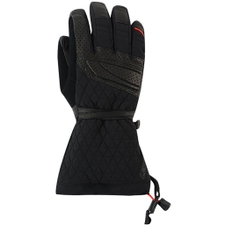 LenzHeat Glove 6.0 Finger Cap - without battery - Gloves Schwarz WomenMSRP 159,95 €127,95 €Available Sizes:SML
LenzHeat Glove 6.0 Finger Cap - without battery - Gloves Schwarz WomenMSRP 159,95 €127,95 €Available Sizes:SML - - 20 %
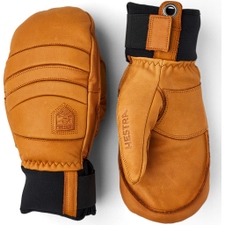 HestraFall Line Mittens Cork / CorkMSRP 159,95 €127,95 €Available Sizes:11,0
HestraFall Line Mittens Cork / CorkMSRP 159,95 €127,95 €Available Sizes:11,0 - - 33 %
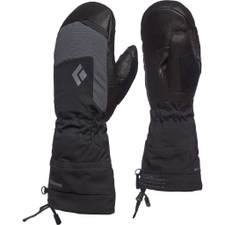 Black DiamondMercury Mittens Black WomenMSRP 119,95 €79,95 €Available Sizes:M
Black DiamondMercury Mittens Black WomenMSRP 119,95 €79,95 €Available Sizes:M
- - 20 %
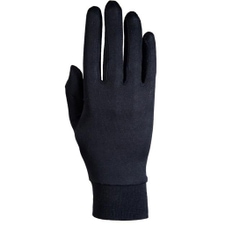 RoecklMerino Gloves BlackMSRP 24,95 €19,95 €Available Sizes:SXL
RoecklMerino Gloves BlackMSRP 24,95 €19,95 €Available Sizes:SXL 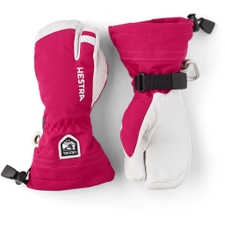 HestraArmy Leather Heli Ski 3-Finger Gloves Fuchsia Kids99,95 €Available Sizes:456
HestraArmy Leather Heli Ski 3-Finger Gloves Fuchsia Kids99,95 €Available Sizes:456- - 20 %
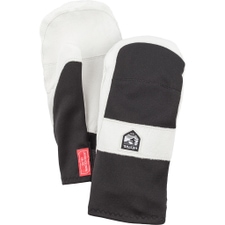 HestraLeather Pull Over Mittens BlackMSRP 64,95 €51,95 €Available Sizes:11,0
HestraLeather Pull Over Mittens BlackMSRP 64,95 €51,95 €Available Sizes:11,0 - - 20 %
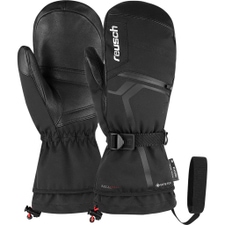 ReuschDown Spirit GTX Mittens Black / SilverMSRP 149,95 €119,95 €Available Sizes:9,510,010,511,0
ReuschDown Spirit GTX Mittens Black / SilverMSRP 149,95 €119,95 €Available Sizes:9,510,010,511,0 - - 40 %
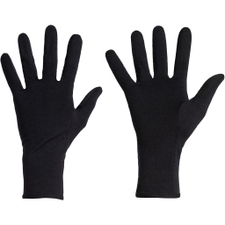 IcebreakerNew Testival Product 260 Tech Liners Gloves BlackMSRP 39,95 €23,95 €Available Sizes:XS
IcebreakerNew Testival Product 260 Tech Liners Gloves BlackMSRP 39,95 €23,95 €Available Sizes:XS
- - 29 %
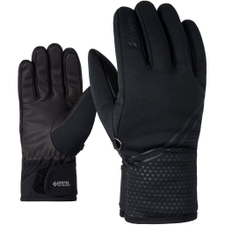 ZienerKanta WS Gloves Black WomenMSRP 69,95 €49,95 €Available Sizes:7,0
ZienerKanta WS Gloves Black WomenMSRP 69,95 €49,95 €Available Sizes:7,0
- - 29 %
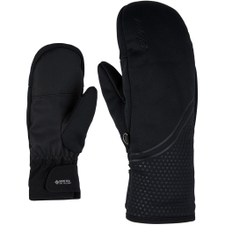 ZienerKantala WS Mittens Black WomenMSRP 69,95 €49,95 €Available Sizes:6,57,07,58,0
ZienerKantala WS Mittens Black WomenMSRP 69,95 €49,95 €Available Sizes:6,57,07,58,0
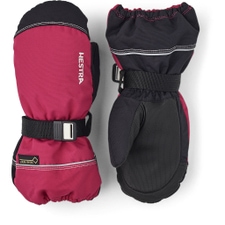 HestraGTX Mittens Fuchsia Kids69,95 €Available Sizes:2346
HestraGTX Mittens Fuchsia Kids69,95 €Available Sizes:2346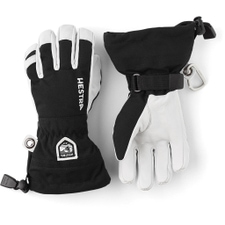 HestraArmy Leather Heli Ski Gloves Black Kids99,95 €Available Sizes:56
HestraArmy Leather Heli Ski Gloves Black Kids99,95 €Available Sizes:56- - 20 %
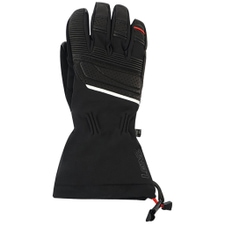 LenzHeat Glove 6.0 Finger Cap - without battery - Gloves Schwarz MenMSRP 159,95 €127,95 €Available Sizes:LXL
LenzHeat Glove 6.0 Finger Cap - without battery - Gloves Schwarz MenMSRP 159,95 €127,95 €Available Sizes:LXL 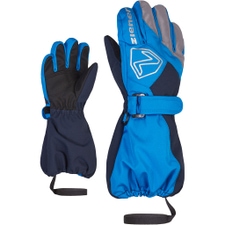 ZienerLauro AS Junior Gloves Persian Blue / Dark Navy Kids39,95 €Available Sizes:9298104110116
ZienerLauro AS Junior Gloves Persian Blue / Dark Navy Kids39,95 €Available Sizes:9298104110116- - 20 %
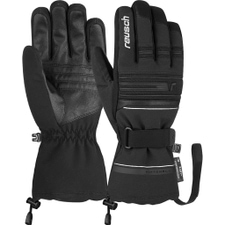 ReuschKondor R-Tex XT Gloves BlackMSRP 79,95 €63,95 €Available Sizes:10,010,511,0
ReuschKondor R-Tex XT Gloves BlackMSRP 79,95 €63,95 €Available Sizes:10,010,511,0 - - 20 %
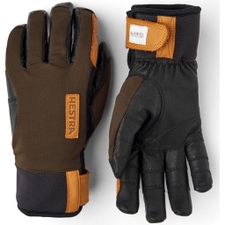 HestraErgo Grip Active Wool Terry Gloves Dark Forest / BlackMSRP 119,95 €95,95 €Available Sizes:11,0
HestraErgo Grip Active Wool Terry Gloves Dark Forest / BlackMSRP 119,95 €95,95 €Available Sizes:11,0
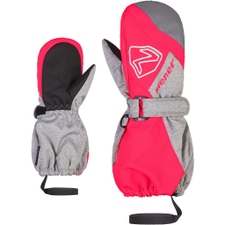 ZienerLaurus AS Junior Mittens Light Mélange / Neon Pink Kids39,95 €Available Sizes:9298104110116
ZienerLaurus AS Junior Mittens Light Mélange / Neon Pink Kids39,95 €Available Sizes:9298104110116- - 33 %
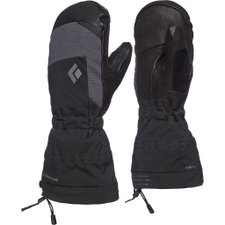 Black DiamondMercury Mitts Mittens Black WomenMSRP 119,95 €79,95 €Available Sizes:LXL
Black DiamondMercury Mitts Mittens Black WomenMSRP 119,95 €79,95 €Available Sizes:LXL
- - 24 %
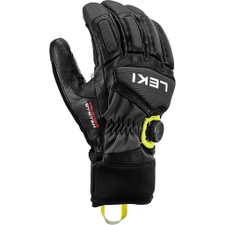 LekiGriffin Tune 3D BOA Gloves Black / Graphite / Ice LemonMSRP 169,95 €129,95 €Available Sizes:7,08,0
LekiGriffin Tune 3D BOA Gloves Black / Graphite / Ice LemonMSRP 169,95 €129,95 €Available Sizes:7,08,0 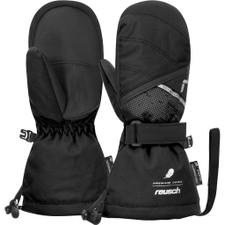 ReuschKaden Down R-Tex XT Mittens Black Kids44,95 €Available Sizes:2,03,04,05,0
ReuschKaden Down R-Tex XT Mittens Black Kids44,95 €Available Sizes:2,03,04,05,0- - 25 %
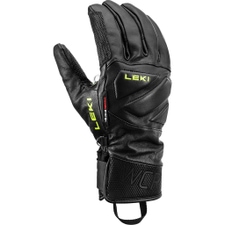 LekiWCR Venom Speed 3D Gloves Black / Ice LemonMSRP 119,95 €89,95 €Available Sizes:7,0
LekiWCR Venom Speed 3D Gloves Black / Ice LemonMSRP 119,95 €89,95 €Available Sizes:7,0  ZienerLaurus AS Junior Mittens Persian Blue / Dark Navy Kids39,95 €Available Sizes:9298104110116
ZienerLaurus AS Junior Mittens Persian Blue / Dark Navy Kids39,95 €Available Sizes:9298104110116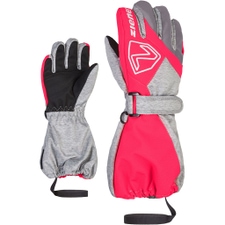 ZienerLauro AS Junior Gloves Light Mélange / Neon Pink Kids39,95 €Available Sizes:9298104110116
ZienerLauro AS Junior Gloves Light Mélange / Neon Pink Kids39,95 €Available Sizes:9298104110116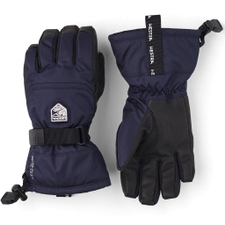 HestraGore-Tex Gauntlet Gloves Dark Navy Kids74,95 €Available Sizes:3,04,0
HestraGore-Tex Gauntlet Gloves Dark Navy Kids74,95 €Available Sizes:3,04,0- - 27 %
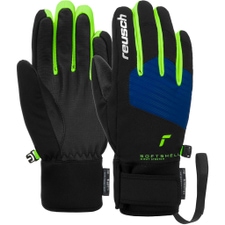 ReuschSimon R-Tex CT Junior Gloves Black / Surf the Web / Neon Green KidsMSRP 54,95 €39,95 €Available Sizes:4,04,55,5
ReuschSimon R-Tex CT Junior Gloves Black / Surf the Web / Neon Green KidsMSRP 54,95 €39,95 €Available Sizes:4,04,55,5 - - 20 %
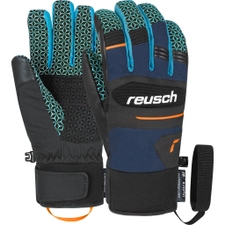 ReuschScorpion R-Tex XT Gloves Dress Blue / Orange PopsicleMSRP 99,95 €79,95 €Available Sizes:9,011,0
ReuschScorpion R-Tex XT Gloves Dress Blue / Orange PopsicleMSRP 99,95 €79,95 €Available Sizes:9,011,0 - - 20 %
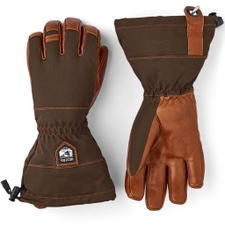 HestraHunters Gauntlet CZone Gloves Dark ForestMSRP 169,95 €135,95 €Available Sizes:8,010,011,0
HestraHunters Gauntlet CZone Gloves Dark ForestMSRP 169,95 €135,95 €Available Sizes:8,010,011,0 - - 20 %
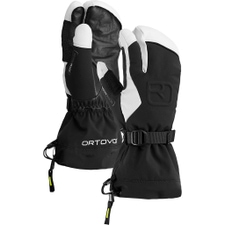 OrtovoxMerino Freeride Gloves Black Raven MenMSRP 139,95 €111,95 €Available Sizes:SML
OrtovoxMerino Freeride Gloves Black Raven MenMSRP 139,95 €111,95 €Available Sizes:SML
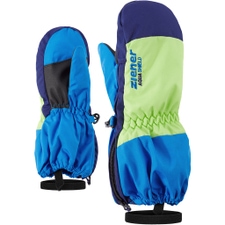 ZienerLevi AS Minis Mittens Persian Blue Kids29,95 €Available Sizes:808692
ZienerLevi AS Minis Mittens Persian Blue Kids29,95 €Available Sizes:808692- - 20 %
 HestraVoss CZone Mittens Sea Blue WomenMSRP 109,95 €87,95 €Available Sizes:10,0
HestraVoss CZone Mittens Sea Blue WomenMSRP 109,95 €87,95 €Available Sizes:10,0 - - 50 %
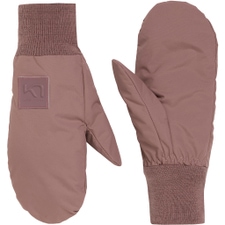 Kari TraaSongve Mittens Taupe WomenMSRP 38,95 €19,50 €Available Sizes:6,0
Kari TraaSongve Mittens Taupe WomenMSRP 38,95 €19,50 €Available Sizes:6,0 - - 20 %
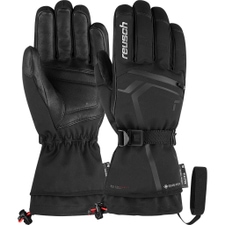 ReuschDown Spirit GTX Gloves Black / SilverMSRP 149,95 €119,95 €Available Sizes:7,08,010,5
ReuschDown Spirit GTX Gloves Black / SilverMSRP 149,95 €119,95 €Available Sizes:7,08,010,5 - - 20 %
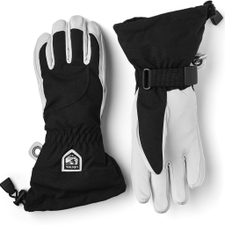 HestraHeli Ski Female Gloves Black / Offwhite WomenMSRP 144,95 €115,95 €Available Sizes:7,0
HestraHeli Ski Female Gloves Black / Offwhite WomenMSRP 144,95 €115,95 €Available Sizes:7,0 - - 20 %
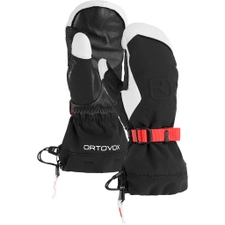 OrtovoxMerino Freeride Mittens Black Raven WomenMSRP 139,95 €111,95 €Available Sizes:XSSML
OrtovoxMerino Freeride Mittens Black Raven WomenMSRP 139,95 €111,95 €Available Sizes:XSSML
- - 31 %
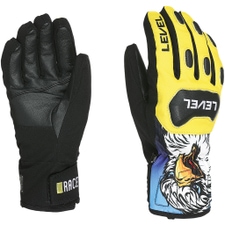 LevelRace Replica Gloves Goldeneagle MenMSRP 99,95 €69,00 €Available Sizes:7,0
LevelRace Replica Gloves Goldeneagle MenMSRP 99,95 €69,00 €Available Sizes:7,0 - - 20 %
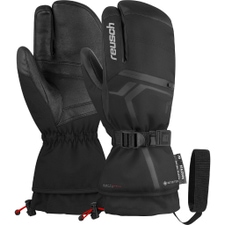 ReuschDown Spirit GTX Lobster Mittens Black / SilverMSRP 149,95 €119,95 €Available Sizes:9,09,510,0
ReuschDown Spirit GTX Lobster Mittens Black / SilverMSRP 149,95 €119,95 €Available Sizes:9,09,510,0 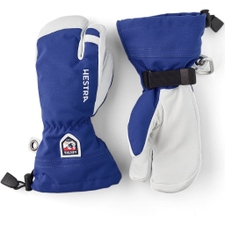 HestraArmy Leather Heli Ski Jr. 3- Gloves Royal Blue Kids99,95 €Available Sizes:4,05,06,07,0
HestraArmy Leather Heli Ski Jr. 3- Gloves Royal Blue Kids99,95 €Available Sizes:4,05,06,07,0- - 36 %
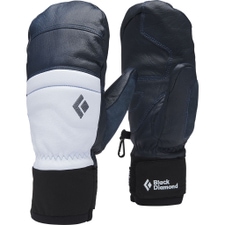 Black DiamondSpark Mitts W Mittens Charcoal / BelayBlue WomenMSRP 109,95 €69,95 €Available Sizes:S
Black DiamondSpark Mitts W Mittens Charcoal / BelayBlue WomenMSRP 109,95 €69,95 €Available Sizes:S 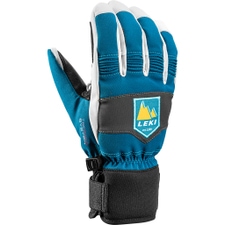 LekiPatrol 3D Gloves Petrol / Graphite Kids54,95 €Available Sizes:4,05,08,0
LekiPatrol 3D Gloves Petrol / Graphite Kids54,95 €Available Sizes:4,05,08,0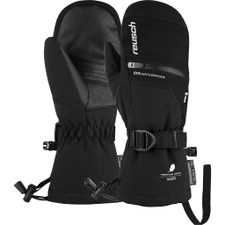 ReuschLando R-Tex XT Junior Mittens Black / Silver Kids59,95 €Available Sizes:4,55,0
ReuschLando R-Tex XT Junior Mittens Black / Silver Kids59,95 €Available Sizes:4,55,0- - 20 %
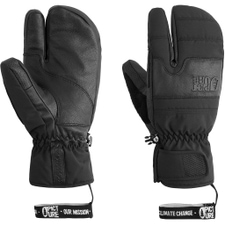 PictureSparks Lobster Mittens Black MenMSRP 79,95 €63,95 €Available Sizes:8,09,010,011,0
PictureSparks Lobster Mittens Black MenMSRP 79,95 €63,95 €Available Sizes:8,09,010,011,0
- - 25 %
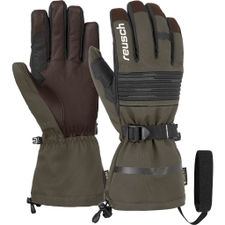 ReuschIsidro GTX Gloves Burnt Olive / Dark BrownMSRP 119,95 €89,95 €Available Sizes:9,010,0
ReuschIsidro GTX Gloves Burnt Olive / Dark BrownMSRP 119,95 €89,95 €Available Sizes:9,010,0 - - 20 %
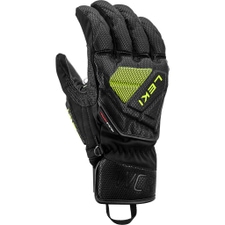 LekiWCR C-Tech 3D Gloves Black / Ice LemonMSRP 149,95 €119,95 €Available Sizes:7,07,58,09,0
LekiWCR C-Tech 3D Gloves Black / Ice LemonMSRP 149,95 €119,95 €Available Sizes:7,07,58,09,0 - - 20 %
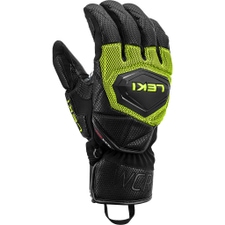 LekiWCR Coach 3D Gloves Black / Ice LemonMSRP 179,95 €143,95 €Available Sizes:7,58,08,59,010,0
LekiWCR Coach 3D Gloves Black / Ice LemonMSRP 179,95 €143,95 €Available Sizes:7,58,08,59,010,0 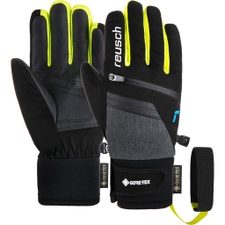 ReuschTravis Gore-Tex Junior Gloves Black / Black Melange / Saftey Yellow Kids59,95 €Available Sizes:4,04,56,5
ReuschTravis Gore-Tex Junior Gloves Black / Black Melange / Saftey Yellow Kids59,95 €Available Sizes:4,04,56,5- - 22 %
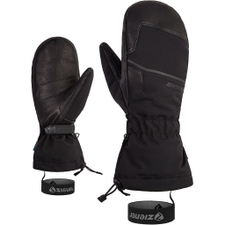 ZienerGarno AS(R) AW Mittens Black MenMSRP 89,95 €69,95 €Available Sizes:9,09,5
ZienerGarno AS(R) AW Mittens Black MenMSRP 89,95 €69,95 €Available Sizes:9,09,5
- - 20 %
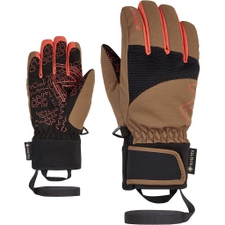 ZienerLotar GTX PR Junior Gloves Wood Tex KidsMSRP 49,95 €39,95 €Available Sizes:3,54,04,55,05,5
ZienerLotar GTX PR Junior Gloves Wood Tex KidsMSRP 49,95 €39,95 €Available Sizes:3,54,04,55,05,5



Gloves from small to large - from thin to thick - from fingers to mitten
Numerous manufacturers offer you a high-quality, functional range of gloves with different functions and certainly leave nothing to be desired. In any case, they ensure warm hands and fun in the snow.
Reusch, Hestra and Ziener in particular serve our children with colors, funny motifs and functions.
The range for men and women is also very versatile and high quality. Thanks to the competent manufacturers that we have selected for our ski gloves, everyone will find the optimal product for their personal requirements.
For women, there is of course a little more color to give the ski outfit the desired color accent. The rest of the range tends to be simple and easy to combine with the main colors black, white, blue and gray.
When it comes to mittens, Hestra, Ortovox, Picture, Lenz and Reusch also offer the proven and popular 3-finger version.
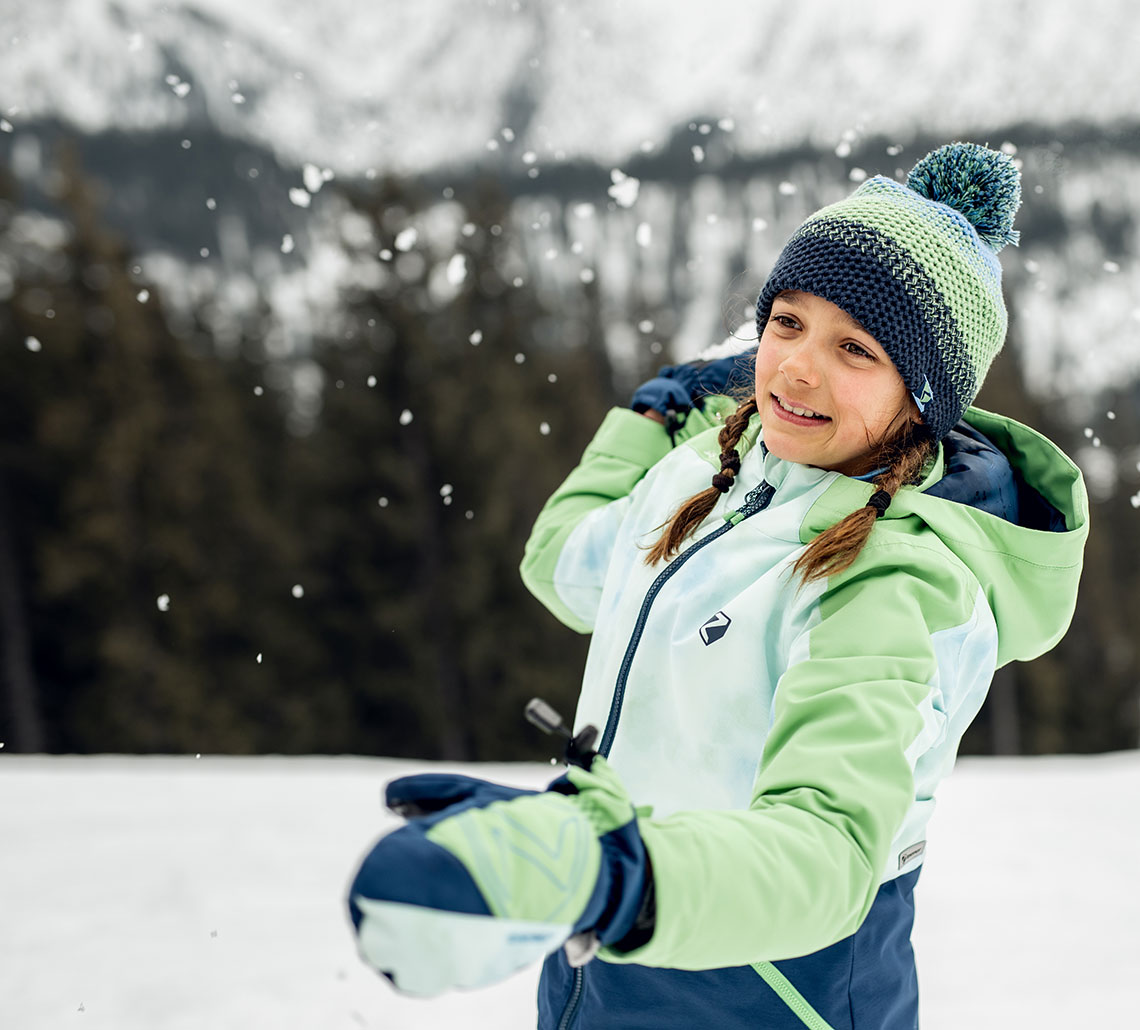
More Glove Facts
An important feature when deciding on the right ski gloves is the cuff length. For deep snow and freeride adventures, it makes sense to choose the longer cuff, which can be easily pulled over the ski jacket. The second variant is the short glove shape, which usually has a Velcro strap directly on the wrist to optimally regulate the width.
Many models also have a so-called “leash” (wrist strap) on the wrist, which ensures that the glove does not fall on the floor or out of the lift if you have to take it off.
Interesting criteria when choosing are certainly properties such as waterproof and heat-insulating and the question of which material you want to choose. When it comes to ski gloves, the focus is absolutely on synthetic fiber materials, but this is closely followed by pleasant leather qualities that can be found from a large number of manufacturers.
For extremely icy temperatures or sensitive fingers, there is also the option of choosing a heated glove, which is priced in the upper segment. The manufacturer Lenz offers excellent products here.

Sustainability
The topic of sustainability is also playing an increasingly important role when it comes to gloves. Individual manufacturers, such as Picture, now also use recycled materials for gloves and pay attention to fair manufacturing, shorter production routes and other environmentally friendly key data that can be verified via Bluesign® or FairWear® certifications. Our future requires us to use all resources sparingly and everyone can make their contribution here.
How do we determine the correct glove size?
The most important thing, however, is that the glove must fit! Here you will find a size chart from Hestra that explains exactly what you should pay attention to.
